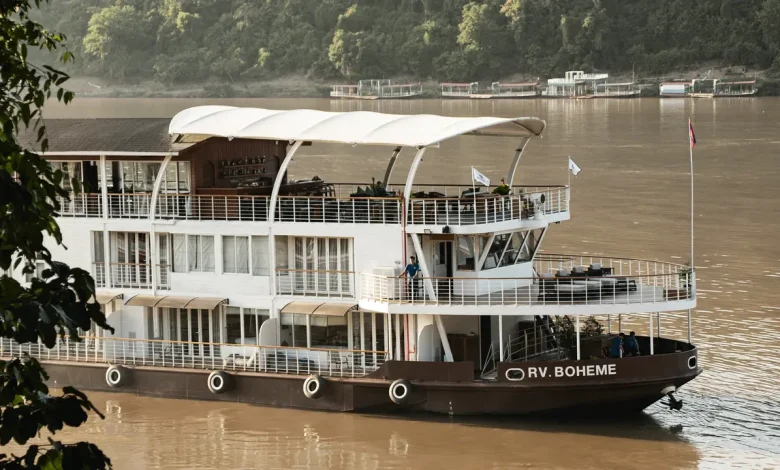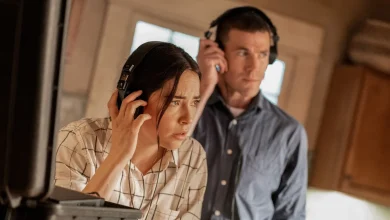An extraordinary voyage down the Mekong river that explores the spiritual side of Laos

On our round trip from Luang Prabang in northern Laos, mystery unfolded at every bend of the river. We gently floated past fishing villages and temples, as the landscape shifted from densely forested humpback mountains to dramatic rock formations and gaping caves.
The Pak Ou Caves are a sacred site with over 4,000 Buddha statues carved from wood, bronze and ceramic. We dropped anchor and climbed up to see them lit by candlelight, and were lucky enough to find monks visiting from Bangkok who invited us to join them in prayer. An early morning outing took us to the Kuang Si Falls to see its tiered cascades flowing through the Laotian jungle, before gathering in turquoise swimming ponds, some of which are considered sacred.
Spirituality runs deep in Laos and so do its centuries-old crafts. In the riverside village of Ban Xang Khong, we tried decorative Saa paper-making, where the inner bark of mulberry trees is boiled to soften the fibres, beaten into a pulp and then pressed onto a screen before being dried. In the village of Ban Chan Neua, known for its pottery, we had a go at making bowls in a workshop run by young locals. We visited a buffalo farm near Luang Prabang to learn about dairy farming, and sample their cheese and ice cream. There are over a million buffalo in Laos, and they are a kind of living bank for locals and a significant source of wealth.
Wat Xieng Thong temple in Luang Prabang.
On our arrival back into Luang Prabang, we spent a night in the Unesco city, which is laid out along a peninsula where the Mekong and Nam Khan rivers meet. The local architectural vernacular is a blend of traditional Laotian structures in teak and French colonial style, from the 1893-1953 occupation.
Ornate temples in gold and jewel tones light up the town, with high sloping roofs dropping low on each side and crowned with symbols of Naga, a mythical serpent believed to protect the Buddha. Set against them are shop-houses and villas painted in bright yellows, greens and pinks with wooden shutters and verandas. Each night, a busy market takes over the main street, Sisavangvong, in a symphony of sound, scent and light, as locals sell handicrafts and knick-knacks spread on the ground. Anywhere else this might feel chaotic, but even in the depths of the stalls, the Laotians move you into a slower rhythm, inviting you to take it all in.




